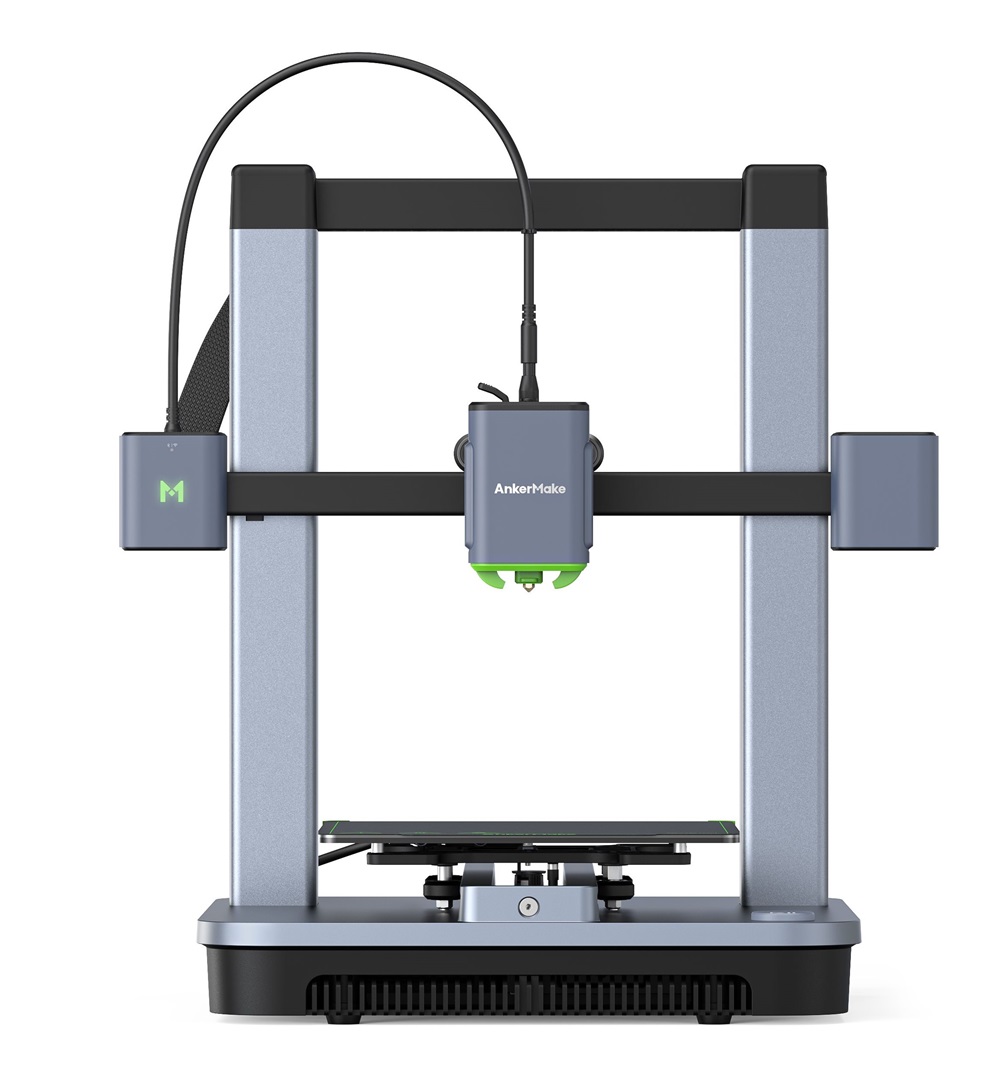Compare M5C vs Comgrow T300
Comparison between the best 3D printers
Choose the best 3D printer at the best price. The cheapest 3D printers are here.
Buy a 3D printer here with 3D Fila.
 |
 |
|
| Model | M5C[BUY M5C] |
Comgrow T300 |
| Printing Material | Filament | Filament |
| Buy Filament for AnkerMake M5C | Buy Filament forSovol Comgrow T300 | |
| Estimated price | $399,00 | $449,00 |
| Manufacturer | AnkerMake | Sovol |
| Release Year | 2023 | 2024 |
| Print Volume [mm] | 220x220x250 | 300x300x350 |
| Printer Size [mm] | 466x374x480 | 503x631x831 |
| Weight [kg] | 9,6 | 17 |
| Power Loss Recovery | YES | YES |
| Enclosed printer | NO | NO |
| Bed Leveling | Automatic | Automatic |
| Filament End Sensor | YES | YES |
| Bed type | Heated | Heated |
| Power supply system | Direct Drive | Direct Drive |
| Standard nozzle | 0,4 | 0,4 |
| Maximum Nozzle Temperature [°C] | 300 | 300 |
| Maximum Bed Temperature [°C] | 100 | 100 |
| Maximum printing speed [mm/s] | 500 | 600 |
| Filament holder | YES | YES |
| Camera for supervision | NO | NO |
| Recommended filaments | PLA, PETG, TPU, ABS, PA, PLA-CF, PETG-CF, PA-CF | PLA, PETG, PET, TPU, PA, ASA, PC, PLA CE, PA-CF, PET-CF |
| Recommended slicers | AnkerMake Studio (macOS, Windows), Simplify3D, Ultimaker Cura, PrusaSlicer | Bambu Studio, Super Slicer, Cura, Prusa Slicer, Orca Slicer |
| Maximum Resolution [mm] | 0,1 | 0,1 |
| Processor | 64 bit | |
| Display | Touchscreen 5'' | |
| Power Supply | 350 W | 150 W |
| Connectivity | Wi-Fi, USB-C, Bluetooth | USB, WiFi |
| Operating systems | Windows, Linux e Macbook | Windows, Linux, Macbook |
| Date of registration in the system | 2024-09-11 | 2024-05-10 |
| Release date | 2023 | 2024 |
| Extra features | The AnkerMake M5 printer stands out for its impressive print speed, reaching up to 500mm/s. It features AI print monitoring, an integrated camera for creating timelapses, auto-leveling bed with pressure sensor, direct extruder, flexible PEI-coated build plate, and Wi-Fi and USB-C connectivity. Assembly is quick and easy, and the printer is designed to deliver high print quality and ease of use. | The Sovol Comgrow T300 printer stands out for its technological innovations and advanced features. With a print size of 300mm300mm350mm, the T300 offers true linear rails on all axes, ensuring greater stability. Its Klipper-based intelligent core and 64-bit microcomputer increase printing speed and quality through pressure advancement and input shaping. The extruder with a gear ratio of 6.5:1 allows for more precise material control, optimizing the printing of flexible materials. In addition, the T300 features a rapid filament cooling system with a high-speed fan and a circular duct piece that improves cooling efficiency. With a 4.3-inch high-refresh rate touchscreen and an 81-point automatic leveling system, the T300 simplifies the preparation and execution of 3D prints. |
| Support for multiple colors and materials (AMS and CFS) | NO | NO |
Notes * |
||
| Cost-benefit | 7 / 10 | 7 / 10 |
| Hardware | 2.8 / 10 | 3.2 / 10 |
| Tela | . | . |
| Print volume | 3 / 10 | 4 / 10 |
| Performance | 4 / 10 | 5 / 10 |
| [BUY M5C] |
Conclusion |
| In comparing the AnkerMake M5C and the Sovol Comgrow T300 3D printers, both models present unique advantages catering to different user needs and preferences. The AnkerMake M5C shines with its faster maximum printing speed, impressive print quality, and user-friendly features such as AI monitoring and a touchscreen interface, making it an excellent choice for users looking for efficiency and ease of use. Its compact design and lightweight nature further enhance its appeal, especially for hobbyists or those with limited workspace. Additionally, the M5C's price point positions it as a cost-effective solution for those primarily interested in standard materials like PLA and PETG. Conversely, the Sovol Comgrow T300 offers a larger print volume, making it a better option for users requiring versatility and the capability to handle bigger projects. Its advanced features, including true linear rails and a sophisticated Klipper-based system, contribute to its performance and stability during complex prints. Although it comes at a higher price, the T300 justifies the cost with its superior technology and capabilities, particularly for more experienced users who may prioritize precision and material control. Ultimately, the choice between these two printers will depend on individual requirements—whether users prioritize speed and ease with the M5C or the advanced features and versatility of the T300. Both printers score similarly in cost-benefit, but their distinct strengths cater to different aspects of the 3D printing experience. |

